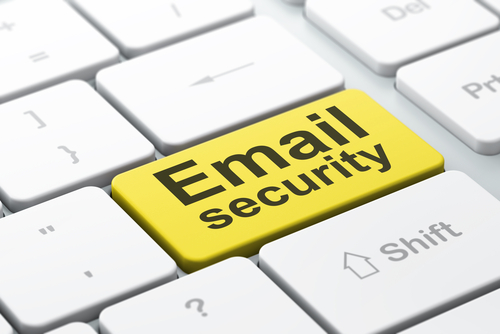Sobre o Curso Securing Email with Cisco Email Security Appliance (SESA)
Carga horária: 24 horas (3 dias)
Descrição do Curso SESA (em inglês)
Course Prerequisites
The knowledge and skills that a learner must have before attending this course are as follows:
- Basic computer literacy, including the use of general office software such as Microsoft Office
- Basic Microsoft Windows navigation and keyboard proficiency skills
- Basic Internet usage skills, including use of a browser and search tools
- Basic email usage skills
- Moderate knowledge of TCP/IP fundamentals
- Experience with Internet-based messaging, including SMTP, Internet message formats, and MIME message formats
Course Description
SESA is a comprehensive three-day hands-on training course that prepares students to install, configure, operate, maintain and perform basic troubleshooting of the Cisco Email Security Appliance (ESA) and to maintain email security in small to medium-sized and enterprise deployments. During the course, students will learn how to install, configure, operate, maintain, administer, and troubleshoot the Cisco Email Security Appliance. Students will also be provided with in-depth instruction on the ESA’s features, learn advanced Internet email security concepts, and gain an understanding of how to customize ESA configurations for their organizational needs.
The course provides students with practical activities that will prepare them to configure, administer, and conduct troubleshooting tasks on a secure email network in SMB and enterprise installations
Course Objectives
Provide students with information and practical reinforcement activities that will prepare them to configure, administer, monitor, and conduct basic troubleshooting tasks of the cisco email security appliance in small to medium-sized businesses and enterprise installations.
Faça seu treinamento com os melhores
Pagamentos no PagSeguro com segurança e flexibilidade em até 12 vezes
Ementa do Curso
- Module 1: Reviewing the Cisco Email Security Appliance
- Lesson 1-1: Reviewing the Cisco Security Management Appliance
- Lesson 1-2: Defining an SMTP Conversation
- Lesson 1-3: Identifying Terms and Definitions
- Lesson 1-4: Examining the Pipeline
- Lesson 1-5: Describing Cisco Email Security Appliance Models and Licensing
- Lesson 1-6: Installing and Verifying the Cisco Email Security Appliance
- Module 2: Administering the Cisco Email Security Appliance
- Lesson 2-1: Configuring Localized Message Tracking and Reporting
- Lesson 2-2: Configuring Centralized Tracking and Reporting
- Lesson 2-3: Tracking and Reporting Messages
- Lesson 2-4: Administering the Cisco Email Security Appliance
- Lesson 2-5: Managing Log Files
- Lesson 2-6: Creating and Using Administrator Accounts
- Module 3: Controlling Sender and Recipient Domains
- Lesson 3-1: Configuring Public and Private Listeners
- Lesson 3-2: Describing the HAT
- Lesson 3-3: Describing the RAT
- Lesson 3-4: Describing Email Authentication Methods
- Lesson 3-5: Defining Domain-Based Message Authentication
- Lesson 3-6: Troubleshooting with Mail Logs
- Module 4: Controlling Spam with Cisco SensorBase and Antispam
- Lesson 4-1: Describing SensorBase
- Lesson 4-2: Configuring Antispam
- Lesson 4-3: Quarantining Spam on the Cisco Email Security Appliance
- Lesson 4-4: Describing Safelist and Blocklist
- Lesson 4-5: Quarantining Spam on the Cisco Security Management Appliance
- Lesson 4-6: Configuring Bounce Verification
- Lesson 4-7: Describing Web Reputation Filters
- Lesson 4-8: Defining Outbreak Filters
- Module 5: Using Antivirus, Virus Outbreak Filters, and Advanced Malware Protection
- Lesson 5-1: Enabling Antivirus Engines
- Lesson 5-2: Using Outbreak Filters
- Lesson 5-3: Using Advanced Malware Protection
- Module 6: Using Mail Policies
- Lesson 6-1: Describing Email Security Manager
- Lesson 6-2: Creating User-Based Mail Policies
- Lesson 6-3: Using Message Splintering
- Module 7: Using Content Filters
- Lesson 7-1: Describing Content Filtering
- Lesson 7-2: Configuring Basic Content Filtering
- Lesson 7-3: Applying Content Filter Applications
- Lesson 7-4: Describing and Configuring Message Filtering
- Module 8: Preventing Data Loss
- Lesson 8-1: Identifying the Data Loss Problem
- Lesson 8-2: Choosing a Cisco DLP Solution
- Lesson 8-3: Implementing DLP Configuration
- Lesson 8-4: Describing the RSA Engine
- Module 9: Using LDAP
- Lesson 9-1: Describing LDAP Features
- Lesson 9-2: Describing Query Tokens and Operators
- Lesson 9-3: Configuring LDAP Profiles
- Lesson 9-4: Configuring SMTP Call-Ahead
- Lesson 9-5: Reviewing Case Studies
- Lesson 9-6: Using LDAP Group Queries
- Module 10: Using Authentication and Encryption
- Lesson 10-1: Configuring Cisco Registered Envelope Service
- Lesson 10-2: Describing TLS
- Lesson 10-3: Authenticating Email with SPF
- Module 11: Using Message Filters
- Lesson 11-1: Identifying Message Filters
- Lesson 11-2: Describing Regular Expression Basics
- Lesson 11-3: Applying Message Filters
- Module 12: Using System Quarantines and Delivery Methods
- Lesson 12-1: Describing Quarantines
- Lesson 12-2: Describing Policy, Virus, and Outbreak Quarantines
- Lesson 12-3: Setting Delivery Limits
- Lesson 12-4: Creating Virtual Gateways
- Lesson 12-5: Configuring Bounce Profiles
- Module 13: Understanding Clustering
- Lesson 13-1: Creating a Clustered Environment
- Lesson 13-2: Joining an Existing Cluster
- Lesson 13-3: Managing a Clustered Environment
- Lesson 13-4: Administering a Cluster from the GUI
- Module 14: Troubleshooting
- Lesson 14-1: Identifying Appliance-Related Problems
- Lesson 14-2: Monitoring the System
- Lesson 14-3: Diagnosing Problems
- Lesson 14-4: Locating Common Problems and Solutions
Atividades Práticas
O curso é repleto de atividades práticas em laboratórios providos pela Cisco, o que torna a experiência de aprendizado bastante proveitosa!
- Hardware Challenge Lab 1: Access the Cisco Remote Lab
- Hardware Challenge Lab 2: Install Your Cisco Email Security Appliance
- Hardware Challenge Lab 3: Perform Administration
- Hardware Challenge Lab 4: Test Your Listener Settings
- Hardware Challenge Lab 5: Prevent Domain Spoofing with DMARC
- Hardware Challenge Lab 6: Defend Against Spam with SensorBase and Antispam
- Hardware Challenge Lab 7: Defend Against Viruses
- Hardware Challenge Lab 8: Prevent Advanced Persistent Threats with Advanced Malware Protection
- Hardware Challenge Lab 9: Customize Mail Policies for Your End Users
- Hardware Challenge Lab 10: Enforce Your Business Policies in Email Delivery
- Hardware Challenge Lab 11: Manage High-Volume Mail Flow
- Hardware Challenge Lab 12: Configure DLP
- Hardware Challenge Lab 13: Configure LDAP Accept
- Hardware Challenge Lab 14: Configure SMTP Call-Ahead
- Hardware Challenge Lab 15: Accommodate Multiple Domains Using LDAP Accept Bypass and Domain Assignments
- Hardware Challenge Lab 16: Control Mail Policies with LDAP Group Queries
- Hardware Challenge Lab 17: Configure Envelope Encryption
- Hardware Challenge Lab 18: Encrypt Email with TLS
- Hardware Challenge Lab 19: Verify SIDF and SPF
- Hardware Challenge Lab 20: Redirect Mail with Message Filters
- Hardware Challenge Lab 21: Configure Virtual Gateways
- Hardware Challenge Lab 22: Configure Clusters
- Hardware Challenge Lab 23: Troubleshoot
Conheça mais sobre a nossa visão sobre as certificações da Cisco aqui!
Valores do Curso
- Reais (BRL): R$ 11.600,00
- Cisco Learning Credits (CLC): 29


Próximos Treinamentos Securing Email with Cisco Email Security Appliance (SESA) 2.1
abril 2024
Sem Treinamentos / Eventos
maio 2024
Sem Treinamentos / Eventos

